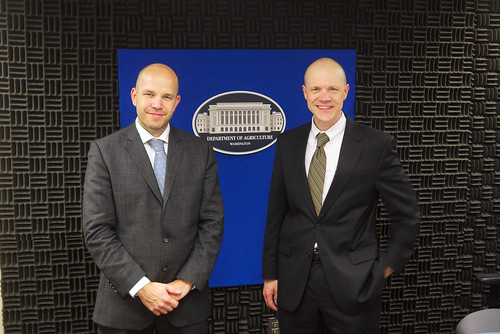Last week, the Department hosted several members of the Organization for Economic Cooperation and Development (OECD) at USDA headquarters in Washington to highlight the findings of a new report, Promoting Growth in All Regions, that says investments in rural places are vital for aggregate national economic growth and in many cases, such investments have found that rural regions have, on average, enjoyed faster growth than urban regions.
For an OECD policy brief that outlines the report’s findings visit this link.
In this time of economic challenges, the United States and other members of OECD cannot leave significant growth opportunities in rural regions untapped. The authors of the OECD report are in Washington this month to launch the report and urge policy makers not to overlook this reality when crafting economic policy for the country.
President Obama and Agriculture Secretary Vilsack have long believed that “strong rural communities are key to a stronger America.” This study provides rigorous research and explanation for why regional rural economies are so important to a nation’s overall economic health. While this report is certainly not the first study to examine the importance of strengthening rural regions, it is notable for its comprehensive, longitudinal, and cross-national analysis.
The report’s authors point out that overlooking the economies of these regions may constitute a missed opportunity for significant economic growth. Missed growth opportunities are also missed revenue opportunities for governments facing budgetary shortfalls and rising deficits. Policy experts must develop comprehensive policy packages that integrate investments in infrastructure, human capital and the labor force to improve rural economies. Additionally, regions must identify their local assets and build a development plan based on those assets.
Many US regions are leading the way in developing such place-based growth strategies. A second recent OECD report, called Linking Renewable Energy to Rural Development contains case studies from Iowa, Maine, Vermont, Tennessee and Oregon. In each of these states, local regions identified renewable energy generation as a local opportunity, and with the help of Rural Development, made strategic investments to develop the potential of renewable energy in the area by linking it to already existing industries, like manufacturing to wind turbine production in Iowa, and the forest products industry to woody biomass in Maine.
The Promoting Growth in All Regions report concludes with a number of findings and policy recommendations that are important for rural economies. They include:
- Investing in less-developed regions makes good economic sense;
- A pro-growth strategy focused on the assets of the region is the most beneficial and sustainable approach;
- Policies that support education and training for low-skilled workers are critical;
- Infrastructure development has the greatest impact when coordinated with other development policies;
- Formal and informal institutions that facilitate communication and collaboration in the region are vital.
To learn more, visit Rural Development's new interactive web map featuring program funding and success stories for the past four fiscal years.

